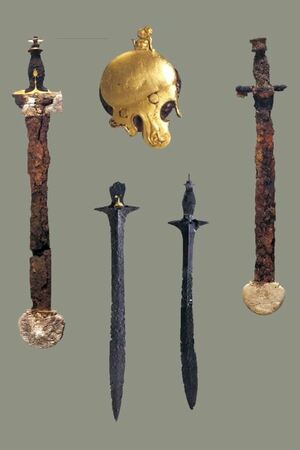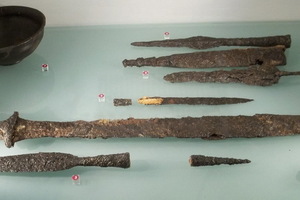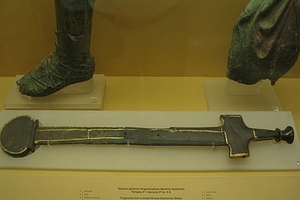Xiphos
The xiphos (Ancient Greek: ξίφος) is a straight, double-edged sword approximately 60 cm in length. It features a distinct point and a leaf-shaped blade. The xiphos was primarily used by hoplites as a secondary weapon when their spear broke or the enemy got too close. Greek and Etruscan phalangites commonly used the xiphos, while Macedonian phalangites used it less frequently. Later, the sword spread among various barbarian tribes on the Apennine Peninsula.
It is believed that the xiphos originates from the bronze swords of the late Mycenaean period. Bronze swords of this period had a thin, double-edged blade about 80 cm in length. After the beginning of the use of iron in sword production in the 9th-6th centuries BC (the Etruscans continued to manufacture bronze weapons longer), the blade became wider and shorter. The hilt was made of bronze. The scabbard was wooden with copper overlays.
The xiphos was primarily a thrusting weapon. It was aimed to strike the enemy in the face, throat, or upper chest. In the 6th century, the single-edged kopis began to spread among Greek armies, slightly displacing the xiphos from the armament of hoplites.





